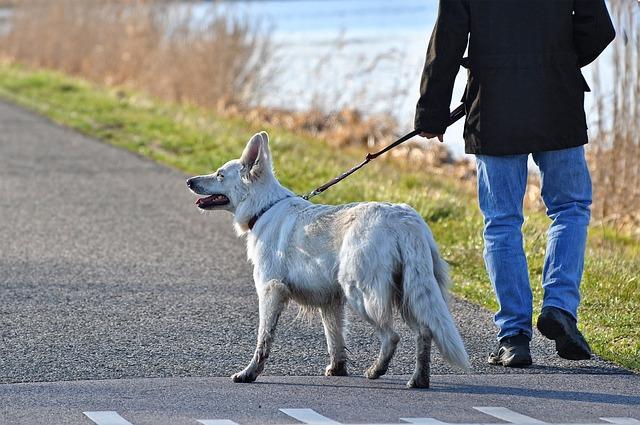Walking multiple dogs can be a joyful and rewarding experience, offering both you and your furry companions a chance to enjoy the great outdoors together. However, managing more than one leash can also present unique challenges that require careful planning and attention. Whether you’re a seasoned dog walker or new to the pack, ensuring the safety and happiness of your canine crew is paramount. In this article, we’ll explore practical tips and strategies to help you navigate the world of multi-dog walks with confidence and ease. From selecting the right equipment to mastering the art of leash handling, our warm and instructive guide will equip you with the knowledge to make every walk a safe and enjoyable adventure for both you and your dogs.
Choosing the Right Equipment for a Comfortable Walk
Ensuring a pleasant and safe experience while walking multiple dogs begins with selecting the appropriate gear. The right leash is crucial; consider using a multi-dog leash that allows for tangle-free walking. Opt for a no-tangle coupler if you prefer separate leashes for each dog, as this will help maintain control and prevent chaos. A sturdy harness is preferable over collars to avoid strain on your dogs’ necks and provide better control.
- Leash Length: Choose leashes that are long enough for comfort but short enough to maintain control.
- Reflective Gear: If you walk during early mornings or late evenings, ensure all equipment has reflective elements for visibility.
- Hands-Free Options: Consider a hands-free leash that wraps around your waist, giving you more freedom to manage multiple dogs.
- Poop Bags and Holders: Don’t forget to carry waste bags. A convenient holder attached to the leash will keep them within easy reach.
Investing in the right equipment not only ensures safety but also enhances the joy of your shared walks. Pay attention to each dog’s individual needs and comfort, and you’ll find that the right gear makes all the difference.

Mastering the Art of Leash Management
When it comes to ensuring a smooth stroll with multiple furry companions, having the right tools and strategies in place is essential. Begin by selecting leashes that suit the size and temperament of each dog. Tangle-free leashes or coupler attachments can make a significant difference in maintaining control and preventing leash knots. Additionally, consider using harnesses instead of collars to distribute pressure more evenly, especially for larger or more energetic dogs.
- Consistent Commands: Establish a set of simple commands and use them consistently. Commands like “heel” or “stop” should be practiced with each dog individually before expecting them to follow in a group setting.
- Positioning is Key: Position the most obedient dog closest to you, as their calm demeanor can influence the others. Dogs with a stronger prey drive or those prone to distractions might benefit from being on the outer side.
- Stay Alert: Keep a keen eye on your surroundings to anticipate any potential triggers, such as other dogs or distractions, allowing you to redirect focus promptly.
- Practice Makes Perfect: Like any skill, leash management improves with practice. Start with shorter walks and gradually increase the distance as both you and your dogs become more comfortable.

Understanding Canine Behavior and Body Language
- Observe Tail Movements: A wagging tail isn’t always a sign of happiness. Pay attention to the height and speed of the wag; a tail held high and wagging slowly can indicate alertness or potential aggression, while a low, quick wag might suggest nervousness.
- Watch the Ears: Ears tell a story of their own. Forward-facing ears can mean your dog is curious or aggressive, while ears pinned back might indicate fear or submission. This subtle cue can help you gauge how your dog is feeling and reacting to the surroundings.
- Mind the Eyes: Soft eyes often mean a relaxed, happy dog, while a hard stare can be a precursor to aggression. If your dog is avoiding eye contact, they might be feeling anxious or stressed.
Understanding these cues helps you anticipate and manage potential conflicts or stressors while walking multiple dogs. Encourage good behavior with positive reinforcement, and remember, each dog is unique. What works for one might not work for another, so stay observant and adaptable.

Creating a Consistent Walking Routine
Establishing a regular walking schedule for your dogs can help maintain their physical health and improve their behavior. Consistency is key when creating a routine. Start by setting specific times for walks each day. This helps your dogs anticipate and prepare for their outings, reducing anxiety and promoting calm behavior.
- Morning and Evening Walks: Aim for at least two walks a day to ensure your dogs get enough exercise.
- Duration: Keep each walk consistent in length. Whether it’s 20 minutes or an hour, stick to the same duration each time.
- Path Familiarity: Choose routes that your dogs are familiar with, but don’t shy away from introducing new paths occasionally to keep them engaged.
Remember, a consistent routine not only benefits your dogs but also helps you manage your day more effectively. As you build this habit, both you and your furry companions will look forward to these moments of connection and exercise.

